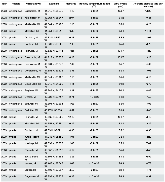Can the Results of Biodiversity-Ecosystem Productivity Studies Be Translated to Bioenergy Production?
- Univ. of Nebraska, Omaha, NE (United States). Dept. of Biology
- Michigan State Univ., Hickory Corners, MI (United States). W.K. Kellogg Biological Station. Plant Biology Dept.
Biodiversity experiments show that increases in plant diversity can lead to greater biomass production, and some researchers suggest that high diversity plantings should be used for bioenergy production. However, many methods used in past biodiversity experiments are impractical for bioenergy plantings. For example, biodiversity experiments often use intensive management such as hand weeding to maintain low diversity plantings and exclude unplanted species, but this would not be done for bioenergy plantings. Also, biodiversity experiments generally use high seeding densities that would be too expensive for bioenergy plantings. Here we report the effects of biodiversity on biomass production from two studies of more realistic bioenergy crop plantings in southern Michigan, USA. One study involved comparing production between switchgrass (Panicum virgatum) monocultures and species-rich prairie plantings on private farm fields that were managed similarly to bioenergy plantings. The other study was an experiment where switchgrass was planted in monoculture and in combination with increasingly species-rich native prairie mixtures. Overall, we found that bioenergy plantings with higher species richness did not produce more biomass than switchgrass monocultures. The lack of a positive relationship between planted species richness and production in our studies may be due to several factors. Non-planted species (weeds) were not removed from our studies and these non-planted species may have competed with planted species and also prevented realized species richness from equaling planted species richness. Also, we found that low seeding density of individual species limited the biomass production of these individual species. Finally, production in future bioenergy plantings with high species richness may be increased by using a high density of inexpensive seed from switchgrass and other highly productive species, and future efforts to translate the results of biodiversity experiments to bioenergy plantings should consider the role of seeding density.
- Research Organization:
- Univ. of Nebraska, Omaha, NE (United States); Michigan State Univ., Hickory Corners, MI (United States)
- Sponsoring Organization:
- USDOE Office of Science (SC), Biological and Environmental Research (BER); USDOE Office of Energy Efficiency and Renewable Energy (EERE); National Science Foundation (NSF) (United States) Univ. of Nebraska (United States); Michigan State Univ. (United States)
- Grant/Contract Number:
- AC05‐76RL01830; FC02-07ER64494; DEB 1027253
- OSTI ID:
- 1325624
- Journal Information:
- PLoS ONE, Vol. 10, Issue 9; ISSN 1932-6203
- Publisher:
- Public Library of ScienceCopyright Statement
- Country of Publication:
- United States
- Language:
- English
Web of Science
Habitat Type Influences Danaus plexippus (Lepidoptera: Nymphalidae) Oviposition and Egg Survival on Asclepias syriaca (Gentianales: Apocynaceae)
|
journal | May 2019 |
Cellulosic biofuel contributions to a sustainable energy future: Choices and outcomes
|
journal | June 2017 |
Data from: Can the results of biodiversity-ecosystem productivity studies be translated to bioenergy production?
|
dataset | September 2015 |
Similar Records
Soil Origin and Plant Genotype Modulate Switchgrass Aboveground Productivity and Root Microbiome Assembly
Arbuscular mycorrhizal fungal community responses to drought and nitrogen fertilization in switchgrass stands




